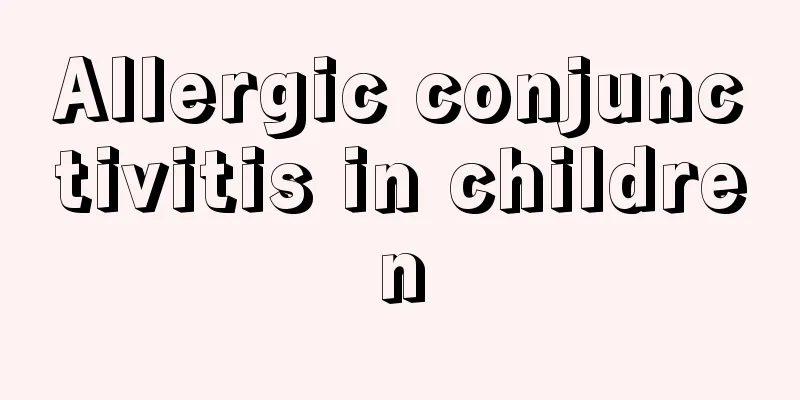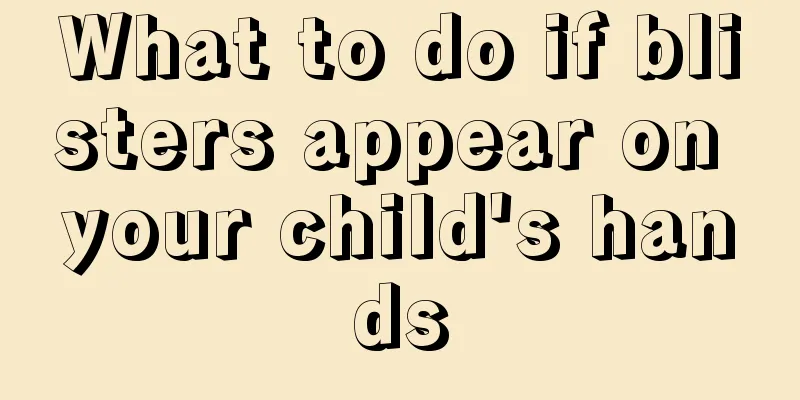Allergic conjunctivitis in children

|
Conjunctivitis is divided into infectious and non-infectious types. The infectious type is caused by bacterial invasion, which leads to inflammation of the conjunctiva. Generally, it will not recur after the treatment is cured, while the non-infectious type will recur repeatedly. Allergic conjunctivitis is one of them, and most of the patients are children. Patients with allergic conjunctivitis should pay attention to protection against allergens. This article introduces the relevant details, let’s take a look. Because children's tissues and organs are not fully developed and their conjunctival mucosa is extremely permeable, they are a high-risk group for allergic conjunctivitis. The prevalence of allergic conjunctivitis in children is about 20%. It occurs all year round, and seasonal allergic conjunctivitis is most common in spring. Now is the time when poplar catkins are flying everywhere, and the down of sycamore trees is also dancing, making the eyes particularly prone to allergies. Children with allergic conjunctivitis often have allergic constitutions, allergic rhinitis or allergic cough. When there is contact with external allergens such as pollen, environmental pollutants, pet fur and dust mites, these allergens bind to the IgE antibodies on the surface of mast cells in the conjunctiva of the eye, causing the release of a large amount of active inflammatory mediators in the mast cells, which quickly induces the disease. The manifestations of allergies are diverse, the main symptoms include frequent rubbing and blinking of the eyes, tearing, redness and swelling of the eyes, etc. Spring allergic conjunctivitis in children has an acute onset and severe symptoms, mainly intense eye itching, foreign body sensation, photophobia, and increased mucous secretions. Since symptoms such as frequent blinking, red and swollen eyes and secretions are similar to other ocular surface diseases, it is easy to misdiagnose. For children with allergic conjunctivitis, parents should pay attention to the following points: 1The first step to prevent allergies is to avoid contact with allergens: In the spring and summer seasons when allergies are prone to occur, the eyes and nasal cavity are the first to be attacked by the pollen floating in the air, the catkins and the down of the sycamore trees. At this time, you must take precautions before going out, wear well-sealed goggles and a mask; in addition, avoid contact with animals such as cats, dogs, and birds; dry bedding frequently and sweep up dust. 2. How to deal with hair entering the eyes: When a foreign object enters the eyes, do not rub it with your hands. Clean the eyes promptly with eye drops, artificial tears, etc. This can reduce or avoid inducing allergies. 3. Treatment of allergic symptoms: During the acute attack of allergies, use a dual-acting drug that combines a mast cell stabilizer and an antihistamine, such as patanol eye drops; children with severe symptoms can use hormone eye drops, such as 0.1% fluorometholone eye drops, and artificial tears at the same time to reduce damage to the corneal and conjunctival tissues. 4. Family emergency treatment: If your child suddenly has an allergy, his eyes are obviously swollen and itchy, and there is no medicine at home, in order to relieve the symptoms and reduce the foreign body sensation and itchy eyes of the child, you can apply cold water or ice water to the eyes and use saline to rinse the conjunctival sac of the eyes. This can have the dual effect of reducing eye swelling and itching. 5. Consolidate the therapeutic effect and prevent recurrence: Allergy symptoms will be significantly improved after using anti-allergic eye drops for about a week. Some parents stop taking the medicine prematurely after seeing that their children's eye redness and swelling have eased, which causes the allergy symptoms to worsen or persist. The correct approach is to continue taking the medication after the allergic symptoms have disappeared to consolidate the effects and prevent recurrence. For children with a history of allergic conjunctivitis, mast cell stabilizers such as sodium cromolyn eye drops and artificial tears can be used preventively in the spring when allergies are more likely to occur due to flying catkins. |
<<: What to do if your two-year-old baby has conjunctivitis
>>: What to do if your child has acute conjunctivitis
Recommend
Black loose stools in a child with fever
Once a child has a fever, parents will worry, and...
What are the effects of precocious puberty?
Nowadays, more and more children eat food that is...
Why is my 4-year-old drooling?
When it comes to drooling, you may think of babie...
Can a 10-month-old baby eat goose eggs?
During the child's growth process, parents wi...
Where is the best place for children to learn swimming
It is very good for children to learn swimming. P...
What to do if your child sweats profusely
Cold is a very common disease that can occur all ...
What foods are good for children's spleen and stomach
During the child's growth and development stag...
One-year-old baby snack recipes
For babies, in daily life, it is okay to eat some...
The reason why children's eyes are red and swollen with eye mucus
The health of children is a matter of great conce...
How to reduce fever in children?
Fever and colds are very common for some children...
What to do if your child inherits body odor
There are many people suffering from body odor in...
There is a white spot on the baby's hand
Parents are very concerned about their babies and...
Parents must understand the causes of children's rebellious psychology
In addition to physical health, mental health is ...
Treatment options for progeria in children
Some of you may have heard of a disease called pr...
Children have fever during the dog days
When the dog days of summer come, families with c...









